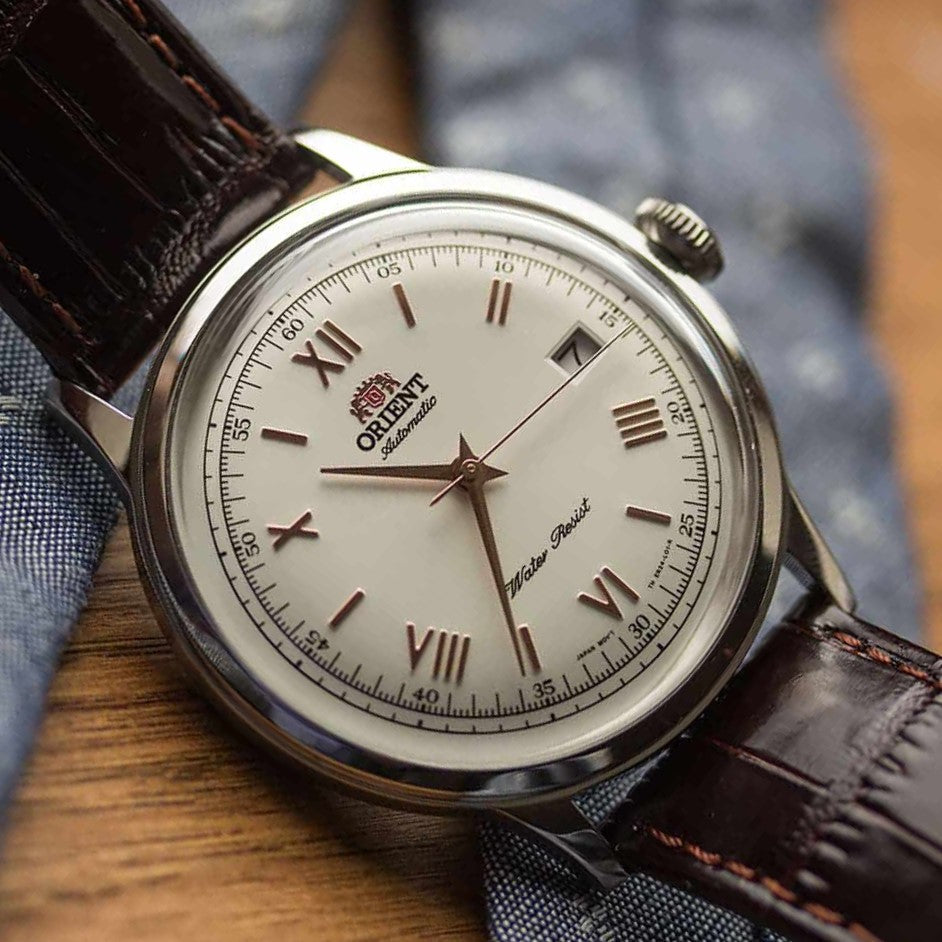
The Evolution of Orient’s Mechanical Movements
Share
When it comes to Japanese watchmaking, Orient has carved a unique niche with its commitment to high-quality mechanical movements at accessible prices. Since its inception, Orient has continuously refined its in-house calibers, solidifying its reputation among watch enthusiasts. In this post, we’ll explore the history and development of Orient’s mechanical movements, showcasing how the brand has evolved over time.
A Brief History of Orient Watches
Founded in 1950, Orient has been a pillar of Japanese horology, focusing on mechanical timepieces even as the industry shifted toward quartz technology. Unlike many competitors, Orient maintained its dedication to automatic and hand-wound movements, appealing to purists who appreciate traditional craftsmanship.
In 2009, Orient became a wholly owned subsidiary of Seiko Epson Corporation, further enhancing its ability to develop and refine mechanical movements. Despite this acquisition, Orient has retained its distinct identity, producing timepieces that balance affordability with in-house watchmaking expertise.
The Early Days: Caliber 469 and the Foundation of Orient Movements
One of Orient’s most enduring movements is the Caliber 469, introduced in the 1970s. Based on the architecture of Seiko’s 7006 movement, the 469 was a workhorse caliber known for its reliability, longevity, and ease of maintenance. This movement powered many of Orient’s most popular models, including the beloved Mako and Ray dive watches.
Key characteristics of the Caliber 469:
-
Automatic winding with a robust design
-
21,600 vibrations per hour (vph)
-
No manual winding or hacking function
-
Exceptionally durable, making it a favorite among collectors
Even decades later, many watches equipped with this movement continue to function flawlessly, showcasing the durability of Orient’s engineering.
The Modern Era: Advancements in Orient’s Mechanical Movements
As watchmaking technology advanced, Orient responded by developing new movements that retained the spirit of the 469 while introducing modern refinements. Some of the most significant innovations include:
Caliber 46 Series
Building on the success of the 469, Orient introduced the 46-series movements, which maintained the same robust architecture while adding enhancements such as improved accuracy and greater efficiency in winding.
Caliber F6 Series
One of the most notable developments in recent years is the F6 series movements. These calibers mark a significant evolution by incorporating features long requested by enthusiasts:
-
Hacking and Hand-Winding – Unlike earlier movements, the F6 series allows for manual winding and second-hand stopping for precise time setting.
-
Higher Beat Rate – Many F6 series movements operate at 21,600 vph, ensuring smooth performance.
-
Enhanced Power Reserve – Offering up to 50 hours of power reserve in some models, increasing practicality for daily wear.
These movements have been featured in modern Orient collections such as the Bambino, Kamasu, and Mako II, reinforcing Orient’s reputation for high-quality, in-house mechanical movements at competitive prices.
Why Collectors Love Orient’s Mechanical Movements
Orient’s mechanical movements have stood the test of time, earning admiration for their affordability, reliability, and technical advancements. Whether you’re a seasoned collector or new to the world of mechanical watches, Orient offers a gateway into high-quality Japanese horology without breaking the bank.
Collectors appreciate Orient for:
-
In-House Manufacturing – Unlike many brands that rely on outsourced movements, Orient produces its own calibers, ensuring quality control and consistency.
-
Exceptional Value – Orient offers automatic watches with high-quality finishing and movements at prices unmatched by Swiss counterparts.
-
Timeless Designs – From classic dress watches like the Bambino to rugged dive watches like the Kamasu, Orient continues to produce stunning designs with reliable mechanical performance.
Final Thoughts
The evolution of Orient’s mechanical movements is a testament to the brand’s commitment to craftsmanship and innovation. From the legendary Caliber 469 to the modern F6 series, Orient has consistently pushed the boundaries of affordability and quality in the mechanical watch industry.
If you’re looking to add a vintage or modern Orient timepiece to your collection, check out our curated selection at The Melted Watch Co. and find the perfect watch to complement your style.
Stay tuned for more insights into the world of Japanese watchmaking, and happy collecting!